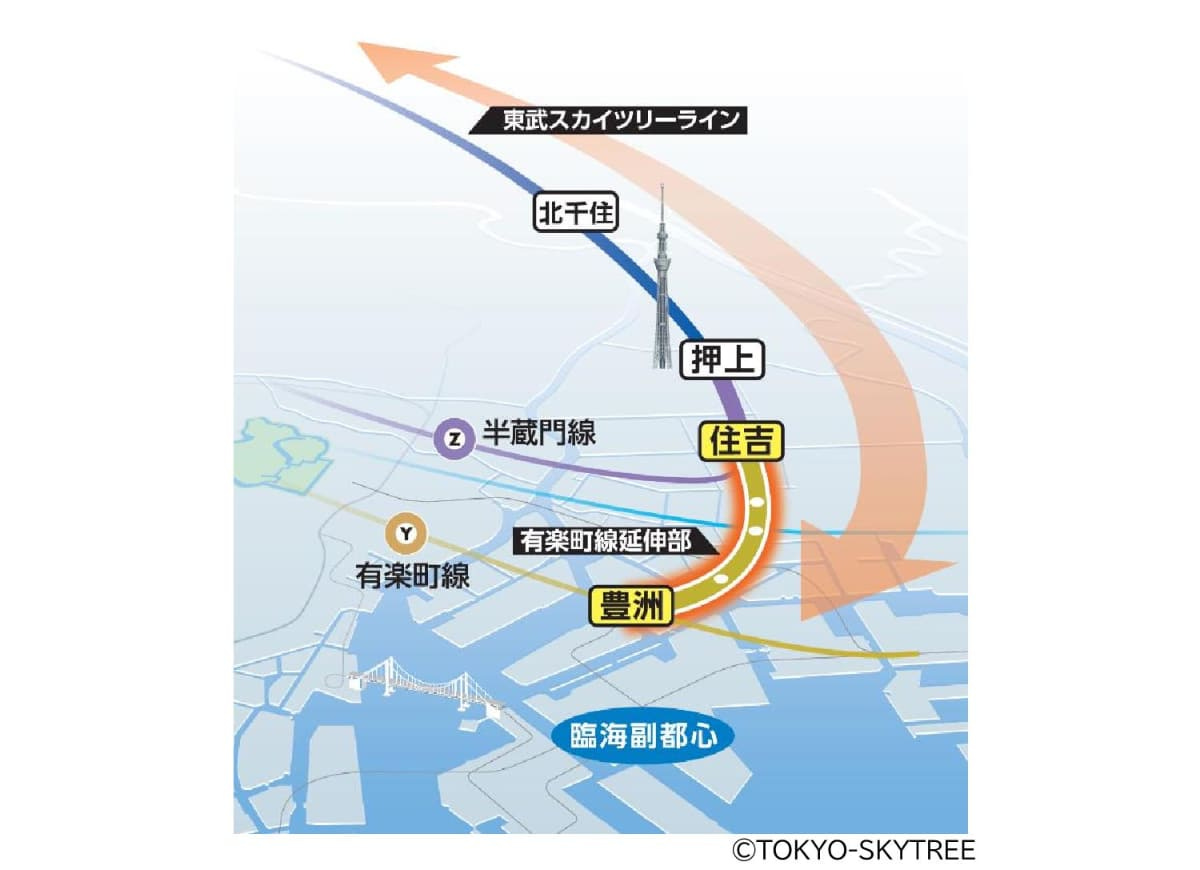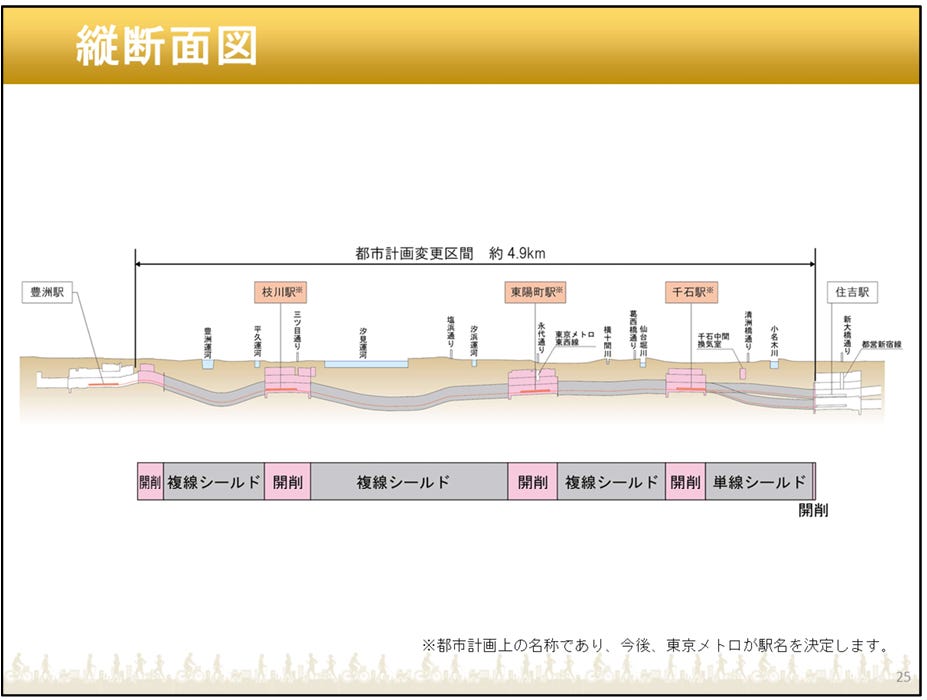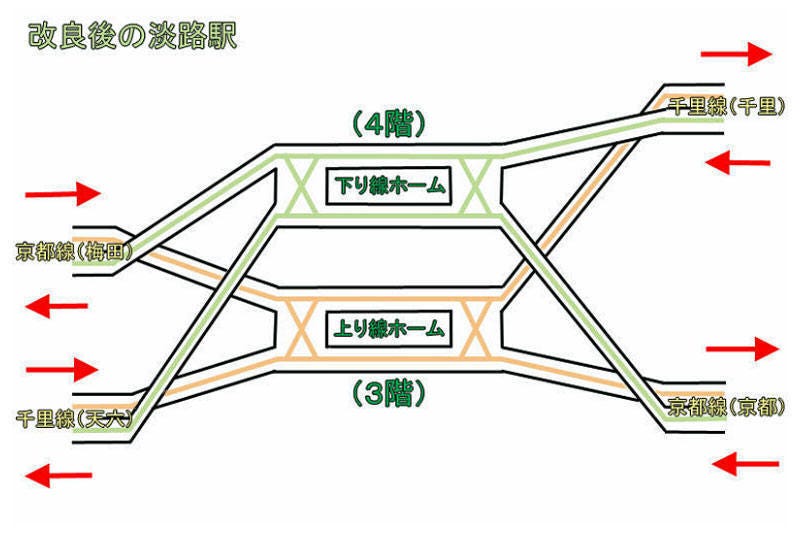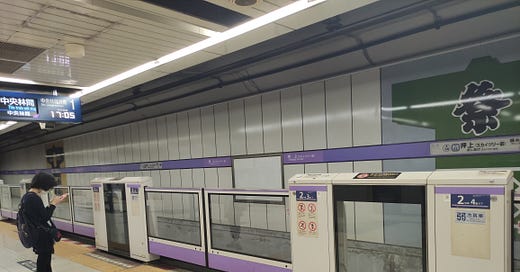The Western Greater Tokyo Area is known for having through service arrangements with various operators akin to a bowl of spaghetti after the opening of the Sotetsu link line into Tokyu Railway and JR-East territory.

However in the east side of Tokyo, Tokyo Metro and Tobu Railway announced on 17 April 2025, that when the currently under construction Yurakucho Line Branch opens in 2030, they plan to operate some Tobu Isesaki and Nikko services on the Tobu Skytree Line into the new Yurakucho Line Branch, interlining with a short section of the Hanzomon Line through Kinshicho. This will create a reverse branch at Sumiyoshi (住吉).

I can not help but think about the future of this part of the Tokyo railway network with the large amount of proposed railway lines in the area and how the service patterns will work. Currently this Tobu-Yurakucho Branch through service might be in preparation for Tokyo Metro Hanzomon Line trains to shift from their traditional present day operating arrangement of running trains into the Tobu Railway. Like this Tobu 50000 series on the Hanzomon Line in October 2024:
To the idea of Hanzomon trains heading into to a different prospective railway was formalized in the MILT Transport Policy Council Report #198 (交通政策審議会答申第198号) published in 2016. Yurakucho Line Branch was formalized here as Project #7. The large number of proposed railways in the Oshiage (押上) area could lead to some interesting considerations in the future on top of the current Tobu-Yurakucho Line Branch through operation announcement.
The Transport Policy Council Report #198 suggested the 24 projects in Tokyo to either be finished or to start construction before 2030. In case you did not notice it is 2025 now and many of these projects haven’t even started construction. Some prioritizations have been made in an update “On the Future of the Tokyo Metropolitan Subway Network” (東京圏における今後の地下鉄ネットワークのあり方等について) in 2021 which confirmed/prioritized shortlist of a few projects from Transport Policy Council Report #198 which are now underway. Including the recently under construction Yurakucho Line Branch project. The lethargy of Japanese railway expansion since the Lost Decades leaves much to be desired.

One of the proposed projects the updated Transport Policy Council Report #198 did not shortlist but in my opinion holds promise, is a rapid railway to Noda City from the current Hanzomon/Tobu transition station at Oshiage (押上). The proposed line will be similar to the Tsukuba Express, a Noda Express if you will. (thick line below) However, another name the “Tokyo Direct Railway” (東京直結鉄道) was also used for this proposal.

When the four line two island platform Oshiage Station Hanzomon Line platforms opened in 2003 the center two tracks (tracks 2 and 3 today used for terminating (Non-Tobu Hanzomon Line services) extend out and curve east from the station under the Tobu Railway-Tokyo Metro connection tracks in preparation for extension into this rapid railway to Noda City (Transport Policy Council Report #198 Project #13) as well as another metro extension to Matsudo City on the JR-East Joban Line (Transport Policy Council Report #198 Project #14). This effectively makes Oshiage Station a grade separated wye.
If this rapid railway to Noda City was realized, in theory, as shown by the above Noda City proposal, rapid railway trains to and from Noda City will through operate into central Tokyo using the Hanzomon Line. This may leave all Tobu Railway services by 2030 to head south via the same Hanzomon Line tracks but then diverge off into the completed Yurakucho Branch Line to Toyosu (豊洲) as announced last week.

However, for those with a sharp eye, you will notice the aforementioned rapid railway plan to Noda promoted by Noda City is actually named the “Tokyo Line 8 Extension (Oshiage~Noda City)” (東京8号線の延伸 (押上~野田市)) yet it shows through operations with Hanzomon Line which has a planning name of Line 11. Line 8 actually the planning name for the Yurakucho Line. Conversely in different interpretations of the various expansion plans in the area, the rapid railway from Noda (blue highlight below map) is suggested to run into the Yurakucho Branch Line known as the “Line 8 Toyosu-Sumiyoshi segment” (orange long dash line below map). Regardless of all the naming inconsistencies, it is pretty typical for Japan to have the final train operations/services not be dictated by project line/section names. However as noted by the title of this article, the trend in Tokyo these days is to do ridiculous inter-operator interlining where possible. This is in contrast to the traditional JR-East “Five Direction Commuter Strategy” (通勤五方面作戦) style of infrastructure planning that aggressively tried to separate it’s various Kanto suburban services into their own isolated tracks.

When the Hanzomon Line to Oshiage was built (below track map, purple lines), reservations were made at Sumiyoshi (住吉) for a side stacked same direction interchange with the Yurakucho Branch Line (below track map, red lines ). When the Yurakucho Branch Line opens, it is planned that trains will merge/diverge with the Hanzomon Line pair of tracks bound to/from Oshiage (below trackmap, right). This is the heart of how Tobu Railway expects it trains to enter the new Yurakucho Branch Line.
In the future if the new lines from Noda and Matsudo Cities are realized, a single track pair bottleneck south of Oshiage (押上) and north of Sumiyoshi (住吉) would be created. Three track pairs from the north squeezing into one Hanzomon track pair through Kinshicho (錦糸町) then back into two track pairs from the reverse branch created by the Yurakucho Branch Line project. One old proposal not included in MILT Transport Policy Council Report #198 was to have the Yurakucho Line Branch further extended up to Oshiage from under the existing Hanzomon Line thru Kinshicho Station, creating a underground quadruple track corridor through Kinshicho.
The extra tracks for the quadruple track corridor would have to extend out south from the outer two Oshiage Station tracks. (Tracks 4 and 1)

Kinshicho Station (錦糸町) is the intermediate station on the existing Hanzomon Line between Sumiyoshi (住吉) and Oshiage (押上). It is a major local hub with JR-Higashi Sobu Local and Rapid trains stopping. Below was the JR-Higashi station when I was at Kinshicho in October 2024. The Hanzomon line runs under the road in front of me, perpendicular to the JR-East Sobu quadruple track embankment. This section will be a bottleneck if all the extensions to Noda and Matsudo cities are realized on top of the underway Yurakucho Branch Extension.
The extra tracks will have to side stack over/under with the southbound track even having to cross over the existing Hanzomon Line pair of tracks to connect with the existing northern side stack structure at Sumiyoshi station (住吉) (white structure on the right of below vertical alignment diagram).

Basically, if a quadruple track arrangement between between Sumiyoshi (住吉) and Oshiage (押上) is pursued, the future arrangement of Sumiyoshi when the railways to Noda and Matsudo Cities are complete, will look like the underground version of the Hankyu Awaji “continuous grade” separation project in Osaka but with crossovers only on one side.

Hankyu Awaji “continuous grade” separation project (right of video) in June 2024:
This underground directional stacked cross platform arrangement at Sumiyoshi should eventually allow for a freeform swapping of a number of combinations of services, with trains to/from Noda, Matsudo and Tobu Railway from the north of Oshiage to enter either the Yurakucho Branch Line or the Hanzomon Line south of Sumiyoshi. Thus creating more Tokyo through operation spaghetti.
In the midterm, when the Yurakucho Line Branch opens in 2030, another question must be asked: Are the Tobu Line trains going down the Yurakucho Line Branch going to then continue up the Yurakucho Line beyond Toyosu (豊洲) to Ikebukuro, Wakoshi and... *gasp* through operate into the, currently, islanded Tobu Tojo network? Thus finally unifying the entire Tobu Network?!?!? Then in the far future will there be a Seibu Ikebukuro, Tokyo Metro Yurakucho/Hanzomon, Tokyu Den-en-toshi, Tobu Tojo/Isesaki/Nikko, Noda Express spaghetti? Time will tell. :)

So thanks for reading this ramble. Like, share and subscribe for more news on how the world's largest urban railway systems could get more spaghetti or just bigger. Drop me a Ko-fi if you like what you read!
Stay tuned:






